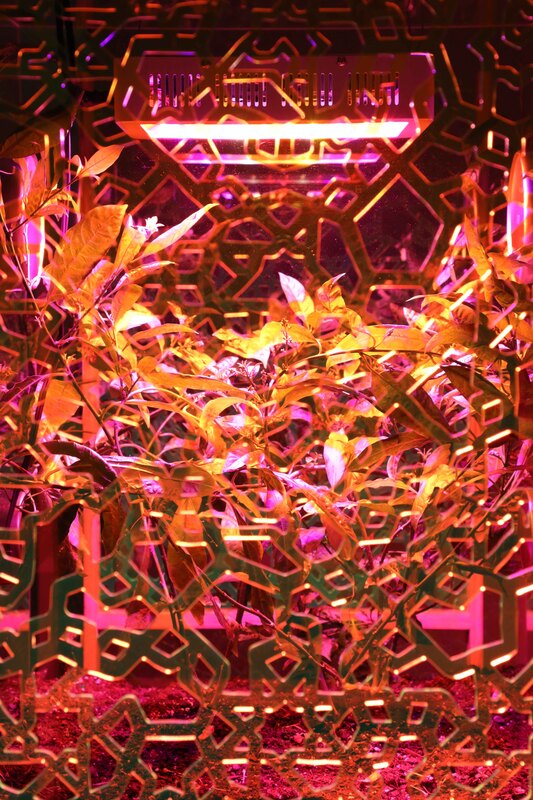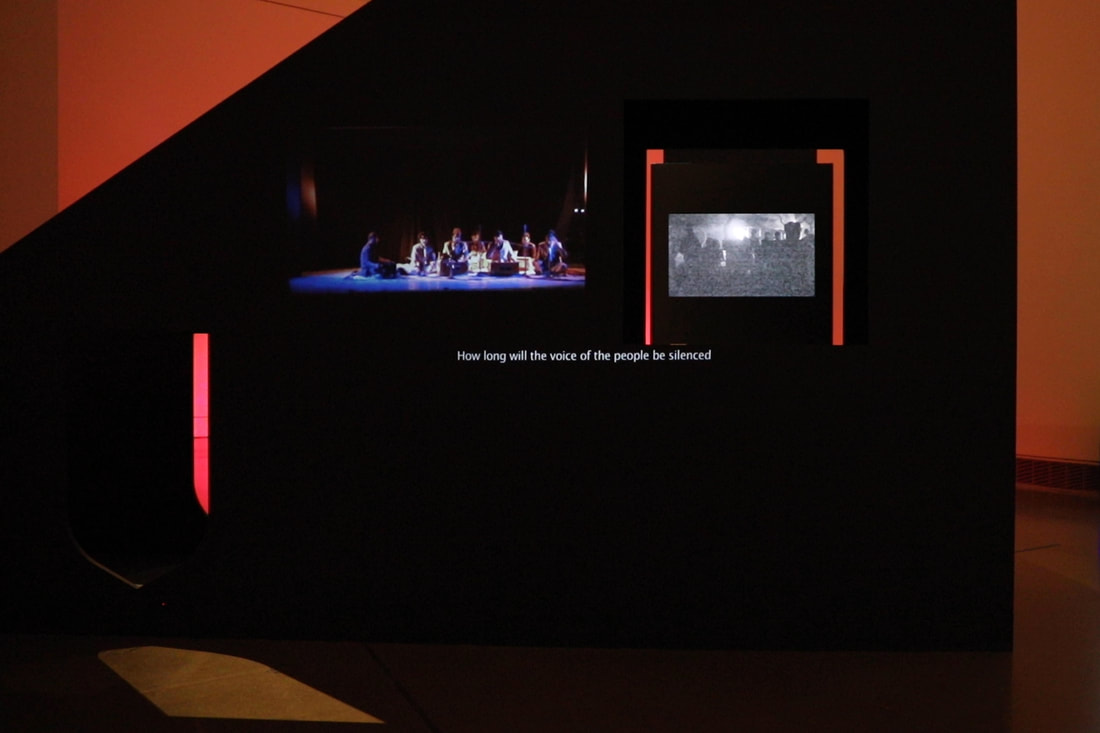Living As A Nation
Living As A Nation is an evolving installation of artwork and research that traces connections forged by diasporic communities outside of the often militarized borders of South Asian nation states. Exploring the hybridity of the histories and contemporary political movements of South Asia and diasporic Desi identity, the work in the installation centers the power of collective memory to counter political acts of disempowerment or erasure. Provoking questions on the limits of postcolonial nationhood, the installation focuses both on the precarious citizenship of the South Asian diaspora in the West, as well as the ways in which this diasporic community speaks to the political movements in South Asia which challenge the prescriptions of nationalism in South Asian nation states.
Over time, the contents of the 2021-22 installation at the Queens Museum, NY, shifted and grew to reveal different combinations of still and moving images, sculpture, and ephemera configured to embody spatial and temporal transits. As an immersive installation, the elements wove into each other, blurring the boundaries between individual works in the space. Drawing inspiration from the sociological concepts of hybridity and liminality in postcolonial communities, as theorised by scholars of British cultural studies, these interwoven elements created overlaps and transferences of meaning between each other.
Over time, the contents of the 2021-22 installation at the Queens Museum, NY, shifted and grew to reveal different combinations of still and moving images, sculpture, and ephemera configured to embody spatial and temporal transits. As an immersive installation, the elements wove into each other, blurring the boundaries between individual works in the space. Drawing inspiration from the sociological concepts of hybridity and liminality in postcolonial communities, as theorised by scholars of British cultural studies, these interwoven elements created overlaps and transferences of meaning between each other.
First aired on Montez Press Radio, January 25, 2022.
Yantra (prototype), 2021, sculpture
|
The central sculptures take their form from the Samrat Yantra, the sundials in the Jantar Mantar observatory in Delhi, India. The work situates the observatory within its contemporary significance as a site synonymous with political protest. As two corresponding forms with intersecting shadows, the sundials are re-imagined as sculptural metaphors for diaspora and resistance.
The sculptures anchor two video projects based on cultural and political movements in Delhi and the United Kingdom. The former traces narratives of belonging and identity in Delhi, India, while the latter focuses on postcolonial immigrant expression from the British Commonwealth. |
Round Two, 2022, video installation
|
Using archival footage, contemporary reporting, references from music videos, and excerpts from Zadie Smith’s White Teeth, this multi-channel installation focuses on postcolonial immigrant narratives from the British Commonwealth. Featuring cultural studies scholar Stuart Hall and the women on strike at Grunwick in the 1970s, the project interweaves these historical landmarks of postcolonial resistance with present-day protests. These include responses to the Grenfell Tower fire, renewed discourse around colonial monuments following the removal of the Colston statue, and contemporary narratives in British music.
|
Bloom/This Is Not That Dawn, 2021-ongoing, sculpture
|
Installed at the start of the exhibition at the Queens Musuem in September 2021, two young Raat Ki Rani (night-blooming jasmine) plants grew to produce flowers in bloom. This sculpture is now an ongoing organic work, as the plants continue to grow within the pedestal. This form of exhibition infrastructure, which is traditionally built to hold inanimate art objects, is reconfigured to create an artificially constructed environment built to keep the plants alive.
On either side of the structure, the fluorescent green lattices reference jaalis from South Asian architecture. The pattern on these screens has been disrupted and glitched from its original intricate symmetry, indicating hybrid and conflicting identities, borders and histories. They situate the jasmine plants, which grow across South Asian nation states, and are also native to the Caribbean. When in bloom these jasmine plants release a smell that is distinctive to these regions. This sensory experience is employed as a metaphor for diaspora and borderlessness, as the viewer navigates the structures around the plants. |
Two Yards of Delhi: naam, 2019, video series (1/5)
|
A two-channel video series that traces narratives of belonging and identity in Delhi. It draws on acts of defiance by the city's communities, who work to claim their citizenship within hostile urban and state mechanisms. The two channels portray multiple narratives, linked by a single audio track on headphones, and include performances by Sufi singers and street theater artists, protests by student activists, and video filmed by children who work in informal economies based around the Yamuna River.
|
Exhibited at the Queens Museum, NYC, 2021-22
https://vimeo.com




